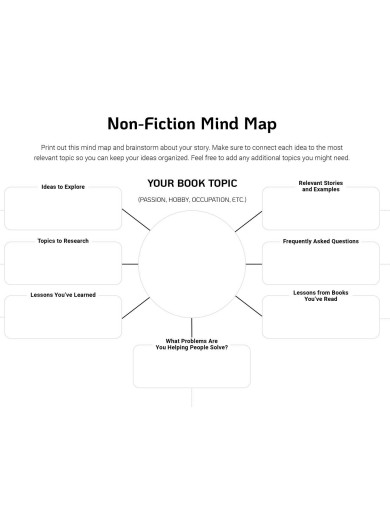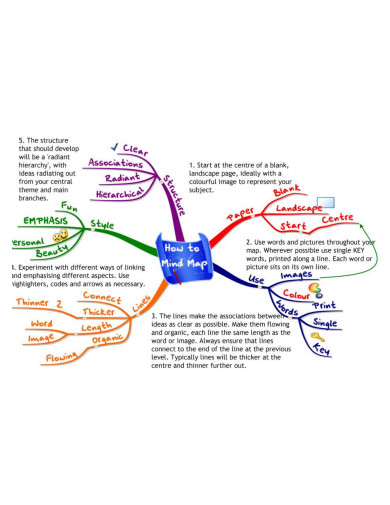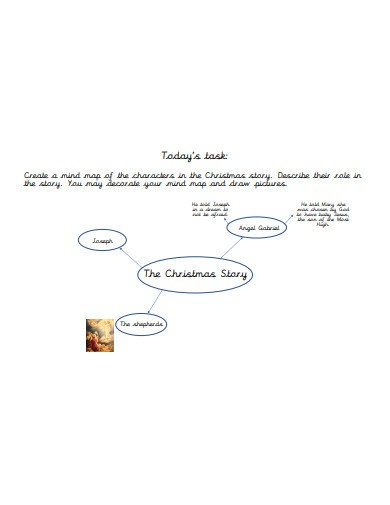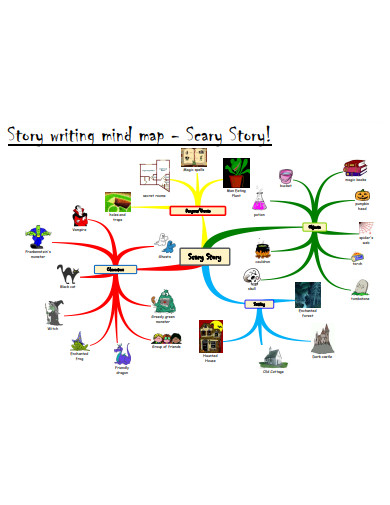7+ Story Mind Map Samples
1. Short Story Mind Map
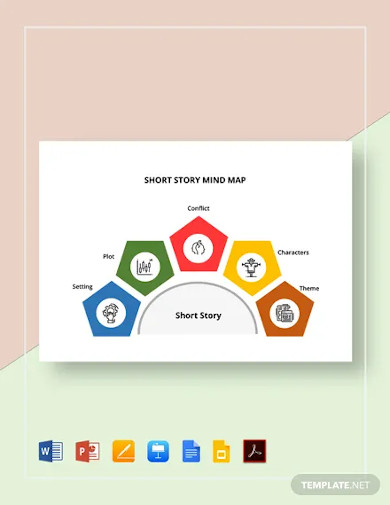
2. Kids story Mind Map
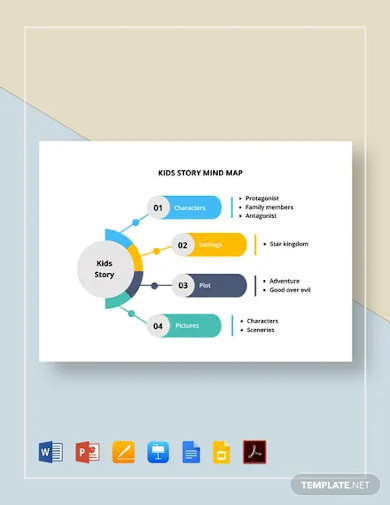
3. Adventure Story Mind Map
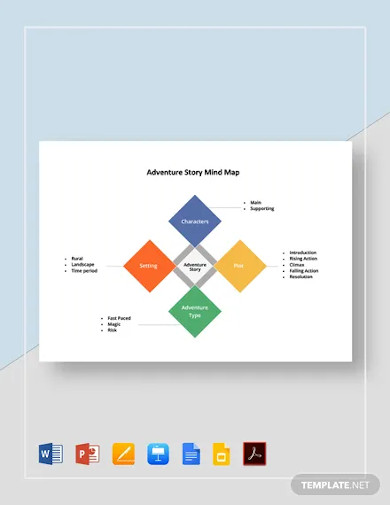
4. Non-Fiction Story Mind Map
5. Story Board Mind Map
6. Sample Story Mind Map
7. Christmas Story Mind Map
8. Story Writing Mind Map
What is a Story Mind Map?
A mind map is a visual representation of ideas and how they all relate to one another. Mind maps are great for brainstorming ideas, keeping organized, and can help you make progress in writing your book.
While there are no set rules for what your mind map should look like, they generally do follow some basic similarities. Typically, a mind map is created on either a blank sheet of paper or on a blank screen if you are using a mind map software tool such as Scapple.
The mind map begins with a central topic in the middle, and then new ideas can be added, moved and connected to different ideas as you begin to brainstorm and think of different story lines.
How to Mind Map a Story?
1. Choose Paper or Digital
The two most common and easy ways to create a mind map is to either create it on actual physical paper, or to use mind mapping software like Scapple, which is what I use in the mindmap diagrams above. There are benefits of choosing paper – you can draw, doodle, highlight, add color, add illustrations, etc. You are not limited to using just words and lines!
However, there are also benefits to using a mind mapping software such as Scapple. My favorite part about Scapple is that you can export your mind map data into an outline of all of your notes. This makes it super easy to move onto the outline process if you enjoy writing from a basic novel outline.
Once you have your format chosen, you are ready to get started!
2. Start with a central topic in the middle of the page.
It helps to begin with creating a central topic in the center. This would generally be the working title of your story, or a summary of what the book would be about. For example, “Little Red Riding Hood” would work as a title for that if you were to mind map the entire story of Little Red Riding Hood.
3. Create Sub-Topics
The next step is to start creating sub-topics. You can organize sub-topics any way that works best for you.
For example, you may have a sub-topic for characters, and then a sub-topic for each character, and go even further with sub-topics for describing your character’s personality and traits. You can then do the same thing for plot, setting, themes, and any miscellaneous ideas you might have during the process. There are no rules, so just keep going. One of the advantages to using a digital software program for mind mapping? You won’t run out of paper or space to keep those ideas flowing! You can also very easily move and re-arrange items, giving you a lot of flexibility during your creative writing brainstorm process.
FAQs
What are some tips to do to make a mind map interesting?
- Use colors: Making your mind map colorful will keep it more exciting and interesting. You can use any color scheme you’d like. Most mind map software programs will allow you to customize the colors of lines and borders. Using different colors can be helpful for organizing different thoughts and sections of the mind map – for example, you could use the color red to link together common themes or ideas, or the color blue to signify a specific character.
- Add images if desired: You can also always doodle some of your own pictures if working on paper.
- Try both digital and paper types of mind maps: Some people prefer making them on the computer, while others enjoy drawing and coloring them out. Try them both to see what you like best.
What are the 5 parts in a story writing?
A story has five basic but important elements. These five components are: the characters, the setting, the plot, the conflict, and the resolution. These essential elements keep the story running smoothly and allow the action to develop in a logical way that the reader can follow.
How can I improve my storytelling skills?
- Choose the Appropriate Time and Audience
- Use a Hook to Engage the Listener
- Keep It Concise
- Highlight Emotional Elements
- Don’t Rush
- Poke Fun at Yourself and Nobody Else
- Vary Your Rate of Speech and Volume
- Ask Listeners to Imagine
Just like any new skill, practice will help you become better at making mind maps. Try to make it a regular practice for anytime you get an idea for a story idea. Making a mind map is a great creative writing exercise to help your mind flow and relax to open up to new ideas and thoughts. Up for a creative challenge to make more mind maps and incorporate them into your writing practice? To help you get started making the mind map, download our free sample templates above to use as your guide!
Related Posts
Exemption Letter
News Report
Employee Uniform Form
Self-Declaration Form
To Whom It May Concern Letter
10 FREE Notice To Quit Letter Samples & Templates
Security Company Profile
Written Warning
Event Program
OMR Sheet
Building Inspection Report
Employment Certificate
Teacher Lesson Plan
Deed of Assignment
Contract Termination Letter

